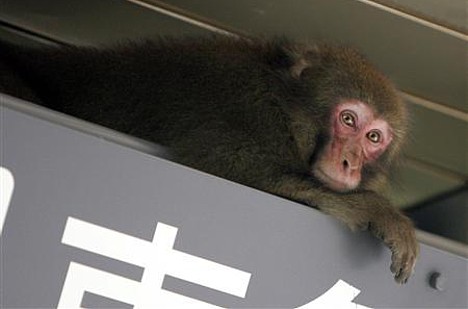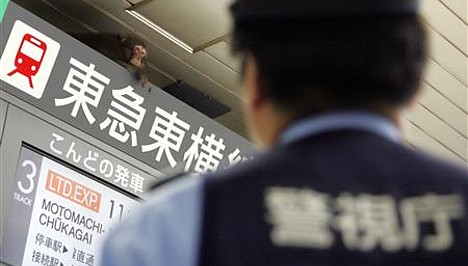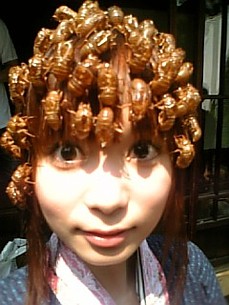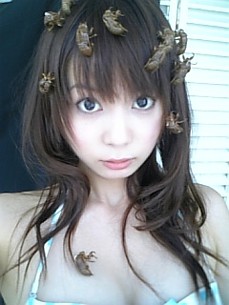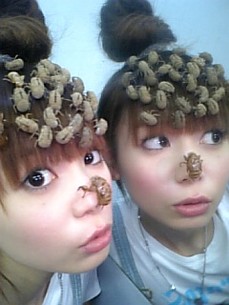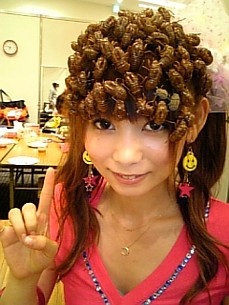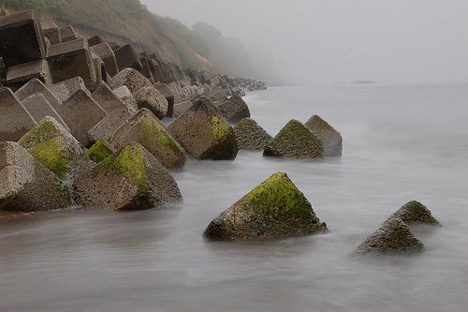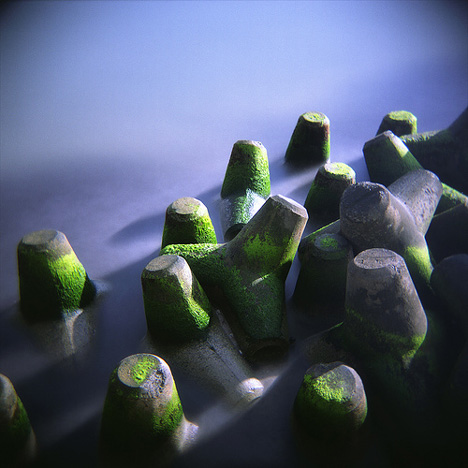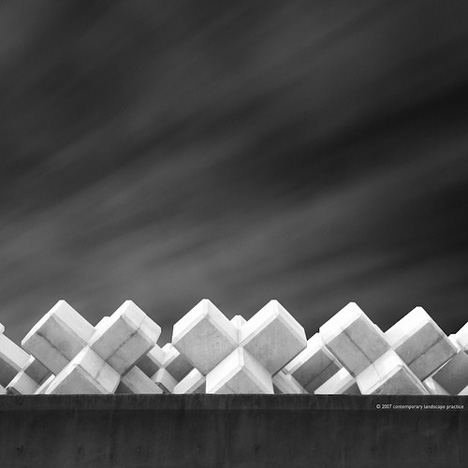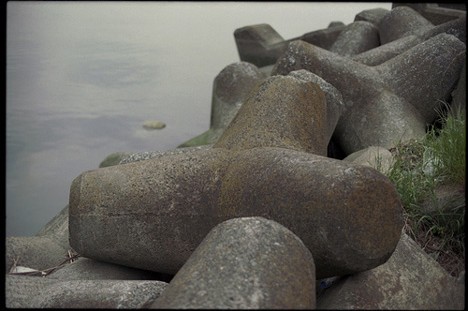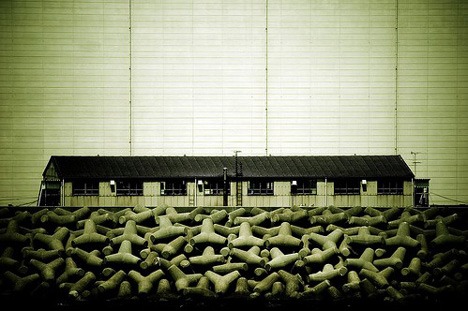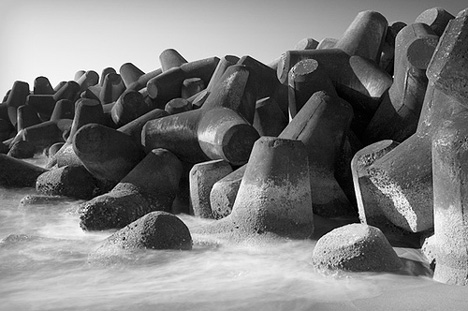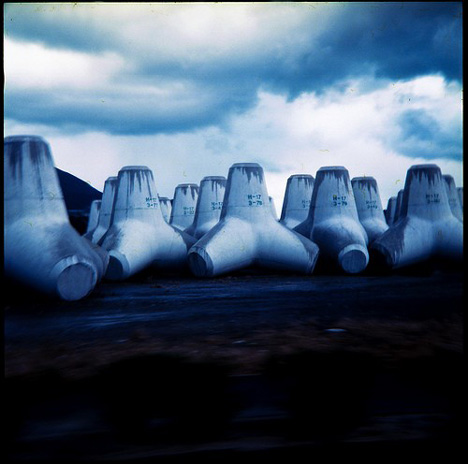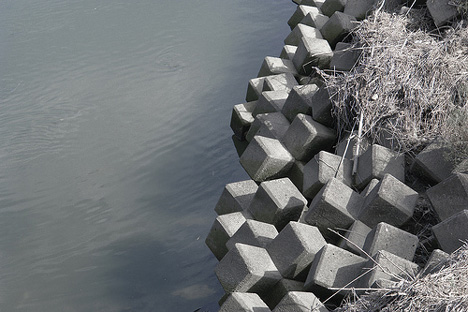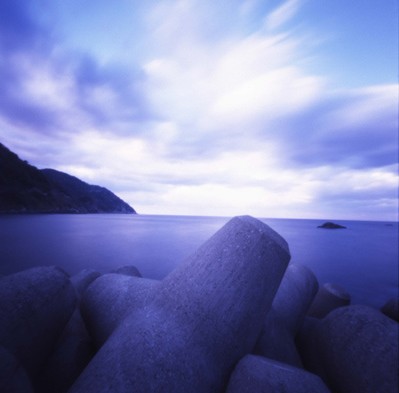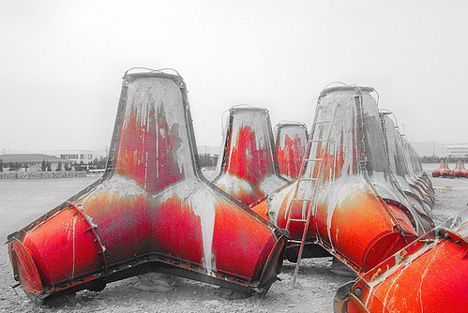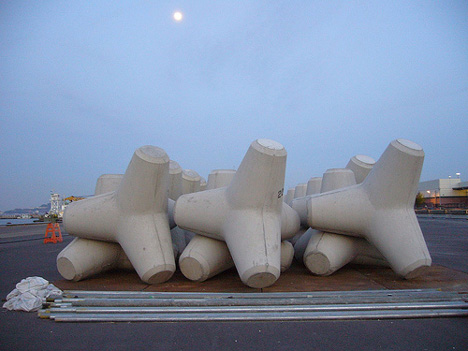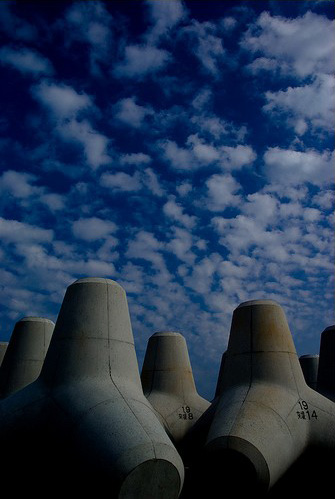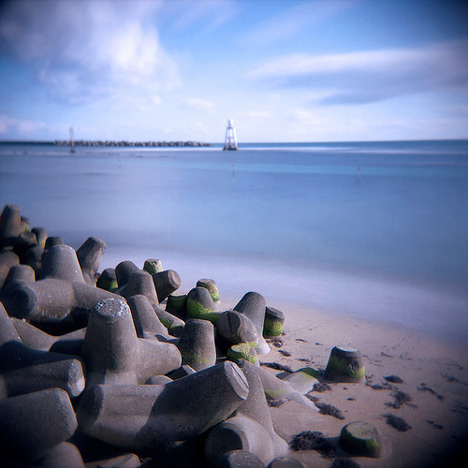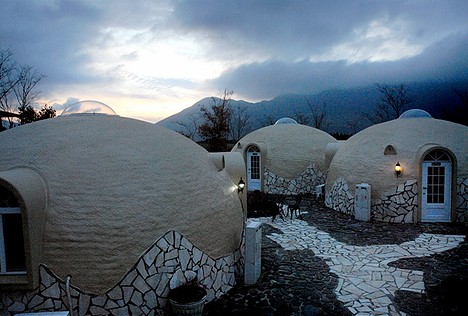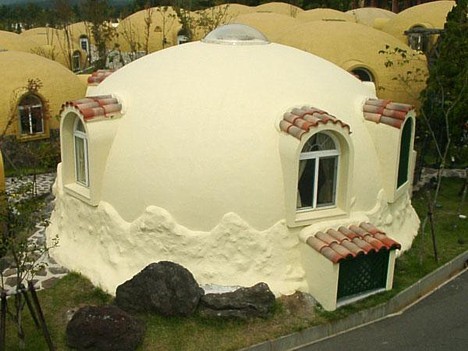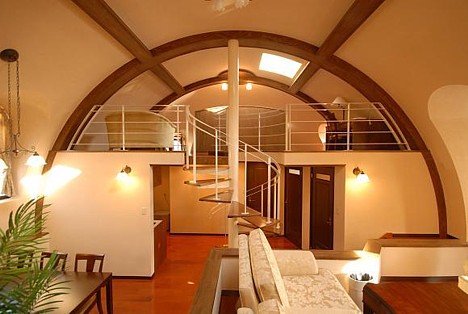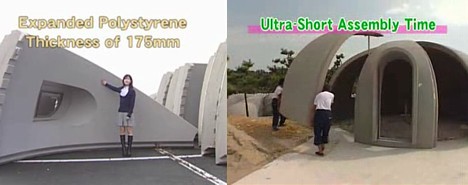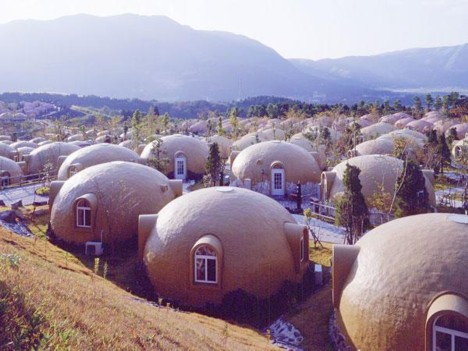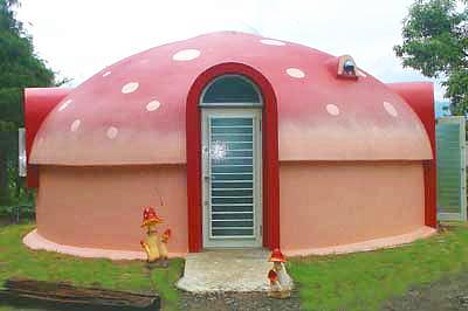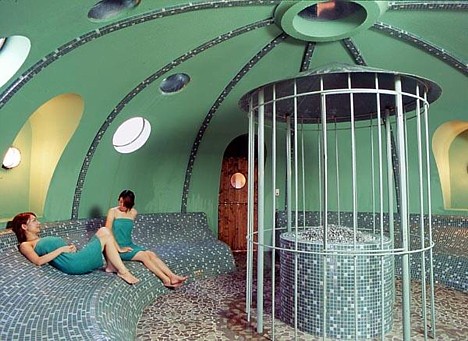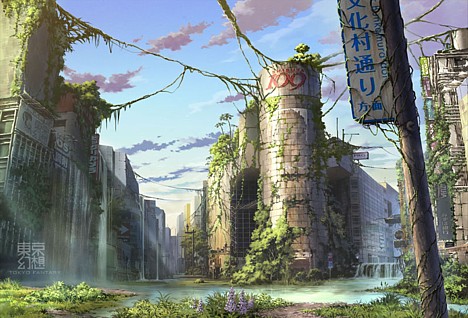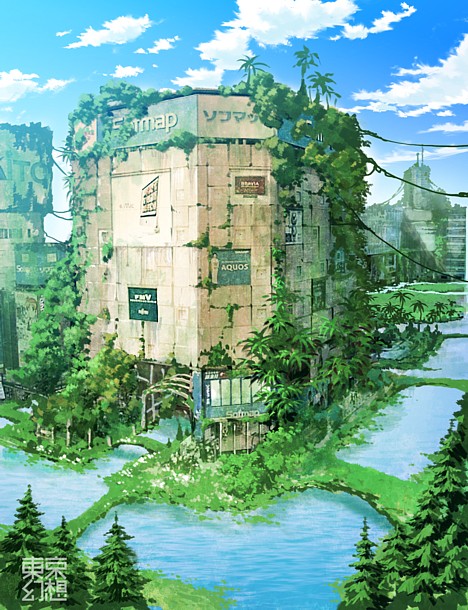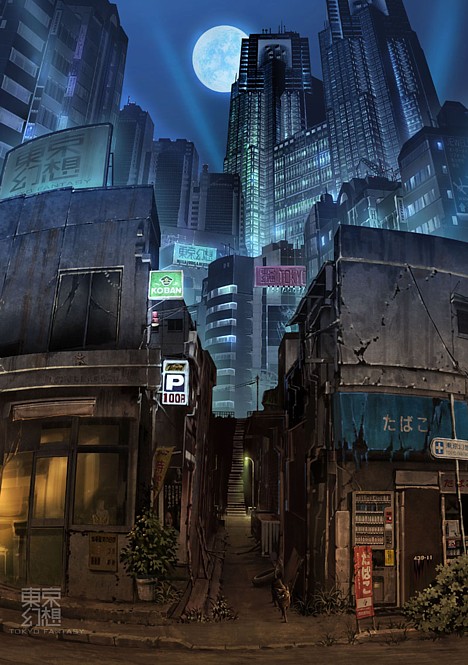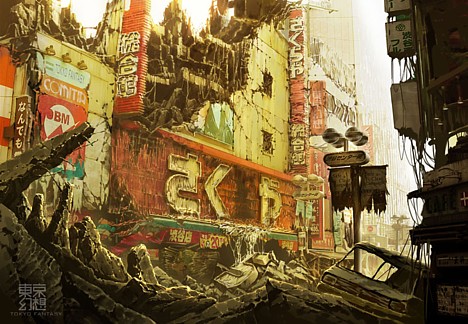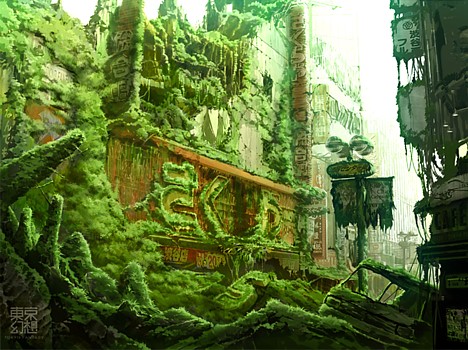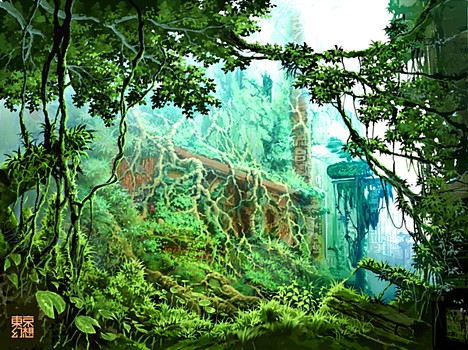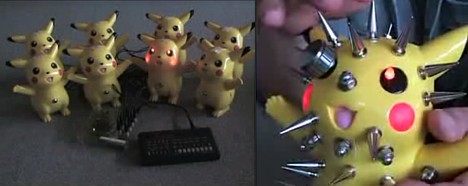Every August, as Japanese spirits return en masse from the otherworld, Tokyo's Zenshoan temple (map) exhibits a spine-chilling collection of 19th-century ghost scroll paintings. Here are a few. (Click the "+" under each image to enlarge.)
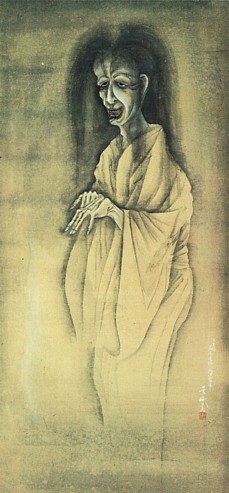
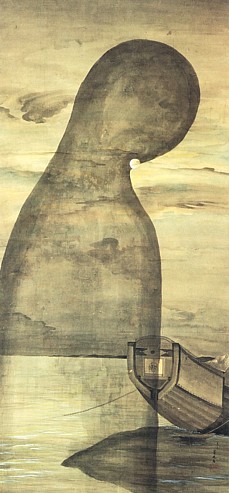
Ghost [+] // Sea Monster [+]
"Ghost" by Iijima Koga is a portrait of a floating, kimono-clad female apparition with all the ghastly physical features you hope to find in an undead spirit -- bony hands, a head of stringy hair, and a pained grimace revealing a mouth full of black teeth. "Sea Monster" by Utagawa Hoen depicts an umi-bozu lurking near a boat anchored at shore, with the moon located precisely where the monster's mouth should be.
* * * * *
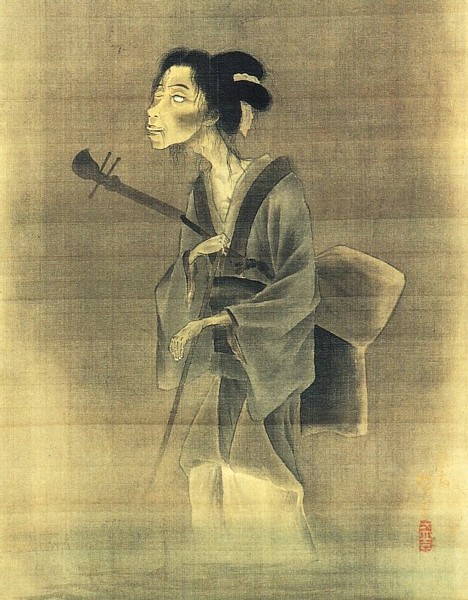
The Ghost of a Blind Female Street Singer [+]
Utagawa Hiroshige's "Ghost of a Blind Female Street Singer" portrays the restless spirit of a street performer, one white unseeing eye wide open, carrying a shamisen as she drifts above the surface of a river on the way to her next performance.
* * * * *
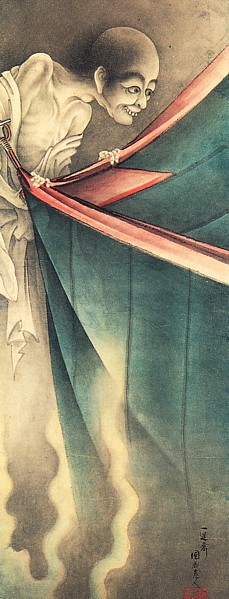
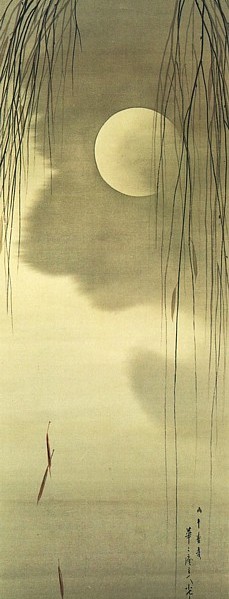
Kohada Koheiji [+] // Willow and the Moon [+]
Utagawa Kunitoshi's "Kohada Koheiji" shows the main character of a famous Edo-period novel (published 1803) by Santo Kyoden. In the story, after Koheiji is killed by his wife and her lover, his gangly ghost returns to haunt them by peering through the mosquito netting surrounding their bed. (This character is also the subject of ukiyo-e artist Hokusai's famous print "The Ghost of Kohada Koheiji.") "Willow and the Moon" by Koson might at first glance appear as nothing more than a peaceful moonlit scene at the water's edge, but look again -- the moon and clouds form a menacing face in the sky, and the bare willow branches form a scraggly head of hair.
* * * * *
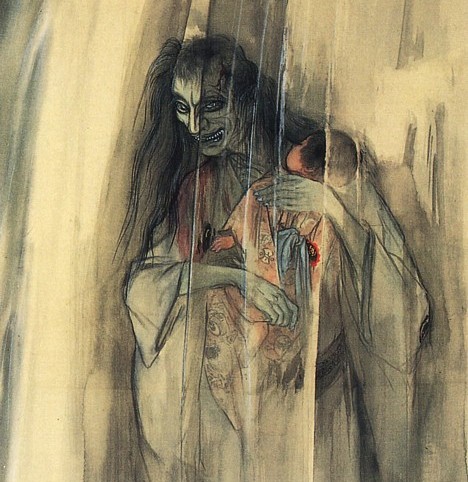
Kaidan Chibusa Enoki: The Ghostly Tale of the Wet Nurse Tree [+]
This painting by Ito Seiu, the godfather of Japanese bondage (kinbaku), depicts a scene from Kaidan Chibusa Enoki, an old horror story in which the ghost of a dead painter returns to protect his baby from his murderer, a wandering samurai who fell in love with his wife while he was away painting. This scroll shows the ghost holding the baby while standing under a waterfall at Juniso (where Tokyo's Shinjuku Chuo Park is now located).
* * * * *
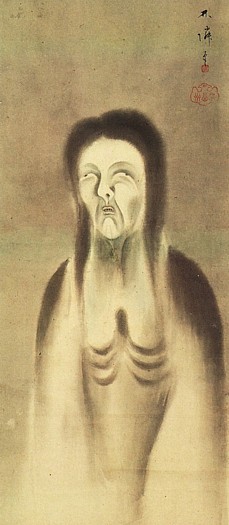
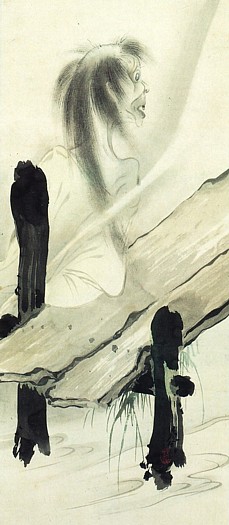
Ghost [+] // Ghost of the Wharf [+]
The subject of "Ghost" by Rinrin is a spirit with an eerie blank stare and gaunt ribs visible under its clothing, and who appears to be melting away. Shibata Zeshin's "Ghost of the Wharf" depicts a feeble-looking apparition relaxing on a pier, casually glancing at something over its shoulder.
* * * * *
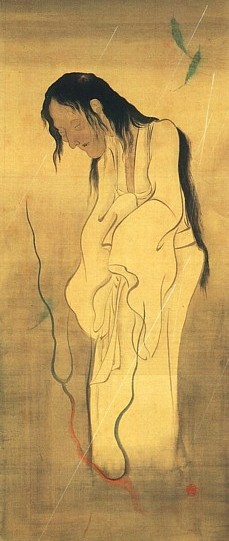
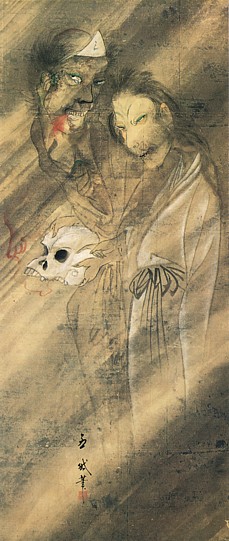
Ghost in the Rain [+] // Ghosts of Husband and Wife [+]
Ikeda Ayaoka's "Ghost in the Rain" shows a forlorn-looking female apparition outside in a storm, with flames rising up from where her feet should be. "Ghosts of Husband and Wife" by Otai is a portrait of what appears to be an undead married couple -- a subject rarely seen in ghost scroll paintings. The sinister pair are pictured clutching a human skull. The husband is wearing a traditional Buddhist funerary headdress worn by the dead, and he has blood smeared on his face.
* * * * *
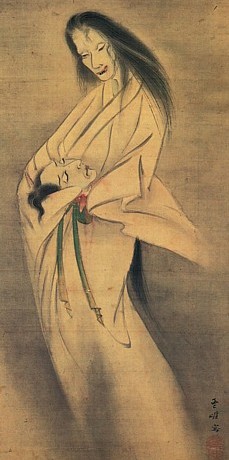
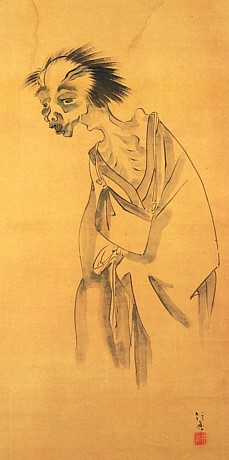
Ghost with a Severed Head [+] // Ghost [+]
Kawakami Togai's "Ghost with a Severed Head" shows a female apparition lovingly cradling a man's decapitated head. The subject of "Ghost" by Gyoshin is a pathetic, emaciated figure with thinning hair and blackened teeth. There seems to be a hint of humor in his expression.
* * * * *
These and dozens more hanging scroll paintings of ghosts are on display throughout the month of August at Zenshoan temple, located near Nippori station in Tokyo (map).
[Images from Yureiga-shu: Zenshoan/Sanyutei Encho Collection, published by Zenshoan, 2000]
